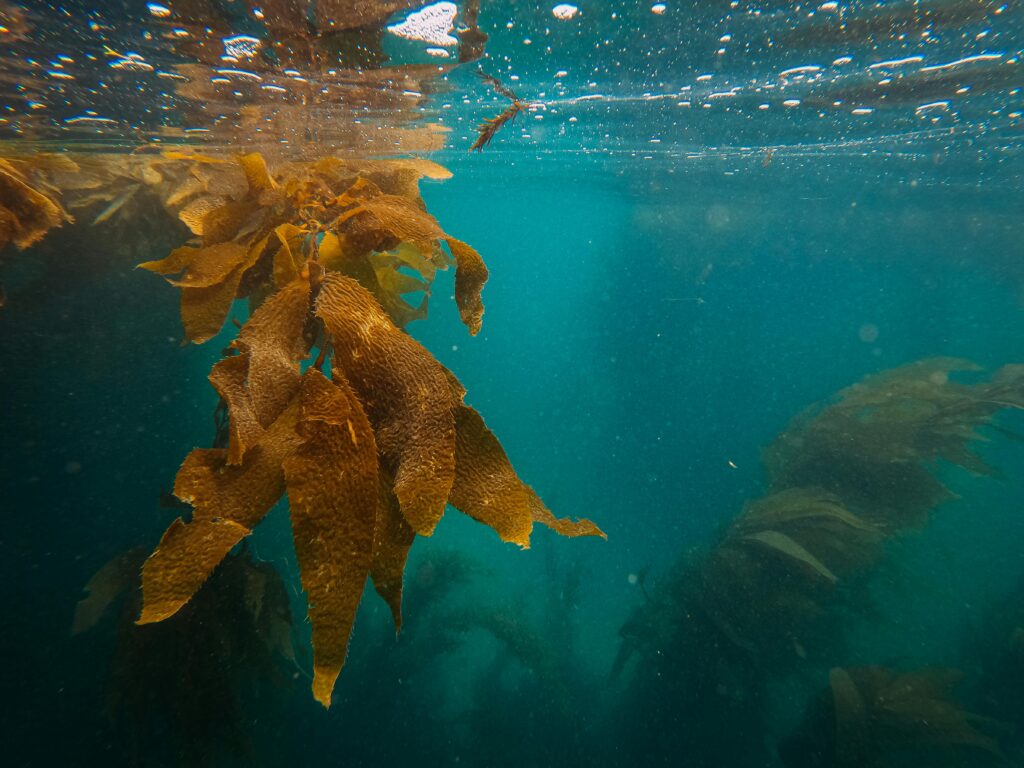Coastal waters around the world are increasingly plagued by heavy metal pollution, with copper being one of the most common culprits. This is a major concern, as the green macroalga Ulva lactuca is a vital component of intertidal ecosystems globally. A recent study by researchers Weimin Chen and Manying Sun has shed light on how acute copper stress affects the physiological metabolism of this important seaweed species.

The researchers found that elevated copper levels significantly inhibited the photosynthetic activity and nitrogen utilization of U. lactuca, while also increasing its respiration. Copper stress limited the activity and gene expression of enzymes involved in carbon and nitrogen assimilation, leading to a sharp decrease in the seaweed’s soluble carbohydrate and protein contents under high stress conditions.
Importantly, the study also revealed that copper-induced oxidative damage caused DNA damage and interfered with the DNA repair mechanisms in U. lactuca. This suggests that high copper levels pose a serious threat to the growth and survival of this key intertidal species, with potentially far-reaching consequences for coastal ecosystems. The findings provide crucial insights for assessing and mitigating the impacts of heavy metal pollution in marine environments.
Coastal Ecosystems Under Threat
The rapid industrialization of coastal regions has led to a surge in heavy metal pollution, with copper being one of the most prevalent and problematic contaminants. As these toxic metals accumulate in the marine environment, they can have devastating effects on the delicate balance of coastal ecosystems.
Ulva lactuca, a common green macroalga found in intertidal zones worldwide, plays a crucial role in supporting the biodiversity and productivity of these habitats. However, as the new study by Chen and Sun demonstrates, this seaweed species is highly vulnerable to the toxic effects of acute copper stress.

Photosynthesis and Nitrogen Metabolism Disrupted
The researchers’ experiments revealed that increasing copper concentrations in the water significantly inhibited the photosynthetic activity of U. lactuca. They observed a sharp decline in the seaweed’s electron transport rates, light-saturated photosynthetic rates, and chlorophyll content – all key indicators of photosynthetic performance.
Copper stress also severely limited the seaweed’s ability to utilize nitrogen, with uptake rates and the activity of the enzyme nitrate reductase (NR) decreasing dramatically as copper levels rose. This disruption of carbon and nitrogen assimilation processes likely contributed to the observed decline in the seaweed’s soluble carbohydrate and protein contents under high copper stress.

Fig. 1
Oxidative Damage and DNA Impairment
In addition to the metabolic impacts, the study found that elevated copper levels induced significant oxidative stress in U. lactuca. The seaweed’s levels of malondialdehyde (MDA), a marker of lipid peroxidation, increased sharply under copper stress, indicating widespread cellular damage.
Worryingly, the researchers also detected elevated levels of 8-hydroxy-deoxyguanosine (8-OHdG) and polyADP ribose polymerase (PARP) in U. lactuca exposed to high copper concentrations. These findings suggest that the oxidative damage caused by copper was severe enough to induce DNA damage and interfere with the seaweed’s DNA repair mechanisms.

Fig. 2
Implications and Future Directions
The profound negative impacts of copper stress on the physiology and metabolism of U. lactuca observed in this study have significant implications for the health and resilience of coastal ecosystems. As a key primary producer and habitat-forming species, the decline or disappearance of U. lactuca due to heavy metal pollution could have cascading effects throughout the entire intertidal community.
The findings underscore the urgent need to address the growing problem of coastal heavy metal contamination, particularly by copper. Effective strategies for monitoring, regulating, and remediating these pollutants will be crucial for protecting the biodiversity and ecological functions of vulnerable marine habitats.
Looking ahead, the researchers suggest that U. lactuca could serve as a valuable indicator species for assessing the impacts of heavy metal pollution in coastal environments. Further research into the specific molecular mechanisms underlying the seaweed’s responses to copper stress may also yield important insights for developing targeted mitigation and restoration approaches.
Overall, this study by Chen and Sun provides a compelling and comprehensive look at the detrimental effects of acute copper pollution on a critical component of intertidal ecosystems. Their findings highlight the pressing need to safeguard the health of our coastal waters for the benefit of both marine life and human communities.
Author credit: This article is based on research by Weimin Chen, Manying Sun.
For More Related Articles Click Here
